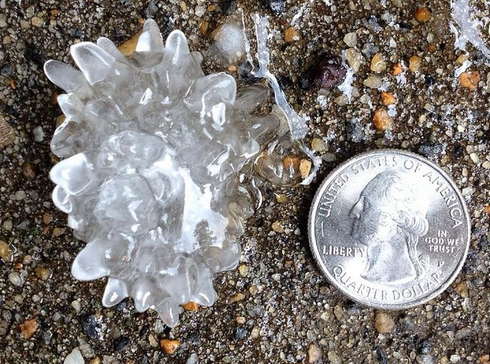
Personal Insurance
Hail Storm Season Is Here, Are You Ready?

Depending on where you live, hail can be either a sporadic, mildly irritating event or a potentially devastating, destructive threat.
According to the Wikipedia article, hail is a “form of solid precipitation”. It sounds harmless enough, yet hail storms cause damages to crops and property each year. Per NOAA, “small hail, up to about the size of a pea, can wipe out a field of ripening grain or tear a vegetable garden to shreds. Large hail, the size of a tennis ball or larger, can fall at speeds faster than 100 miles per hour and can batter rooftops, shatter windows and “total” automobiles.” Hail causes an average $1 billion a year in damages in the U.S., according to the National Storm Damage Center [https://stormdamagecenter.org/hail-storm.php]
In North America, hail is most common in the area where Colorado, Nebraska, and Wyoming meet, known as “Hail Alley”. Hail in this region occurs between the months of March and October during the afternoon and evening hours, with the bulk of the occurrences from May through September. Update: just this past Sunday, The Weather Channel reported severe damage from hails storms in the south. Watch the video.
Identify hail damage after a storm
If a storm hits your home, follow these guidelines:
- Look for dents, cracks or breaks on windows, screens, doors and even patio furniture.
- Examine outdoor appliances like air conditioning units, and look for dents or excessive water intake.
- Check trees and shrubs; if they’re stripped of foliage, there’s a possibility your roof might be damaged, says the Rocky Mountain Insurance Information Association.
- Inspect your vehicle(s) for cracked or broken glass, or dents caused by hail
- Be safe when checking roof damage; consider using binoculars, or call a professional
If you find damage, take action
Take pictures before you make any temporary repairs. And, cover any damaged areas to prevent additional negative effects from the storm– board up any broken windows or cover a hole in a roof with a tarp.
Regardless of the level of damage, you’ll also want to promptly report it to your insurance company, which may have recommendations on finding a contractor to repair damage. (Remember to save all the receipts; you’ll likely need them for your insurance claim.)
Download our full checklist so you can be prepared when the skies get dark and grey, for how to look for hail damage.

